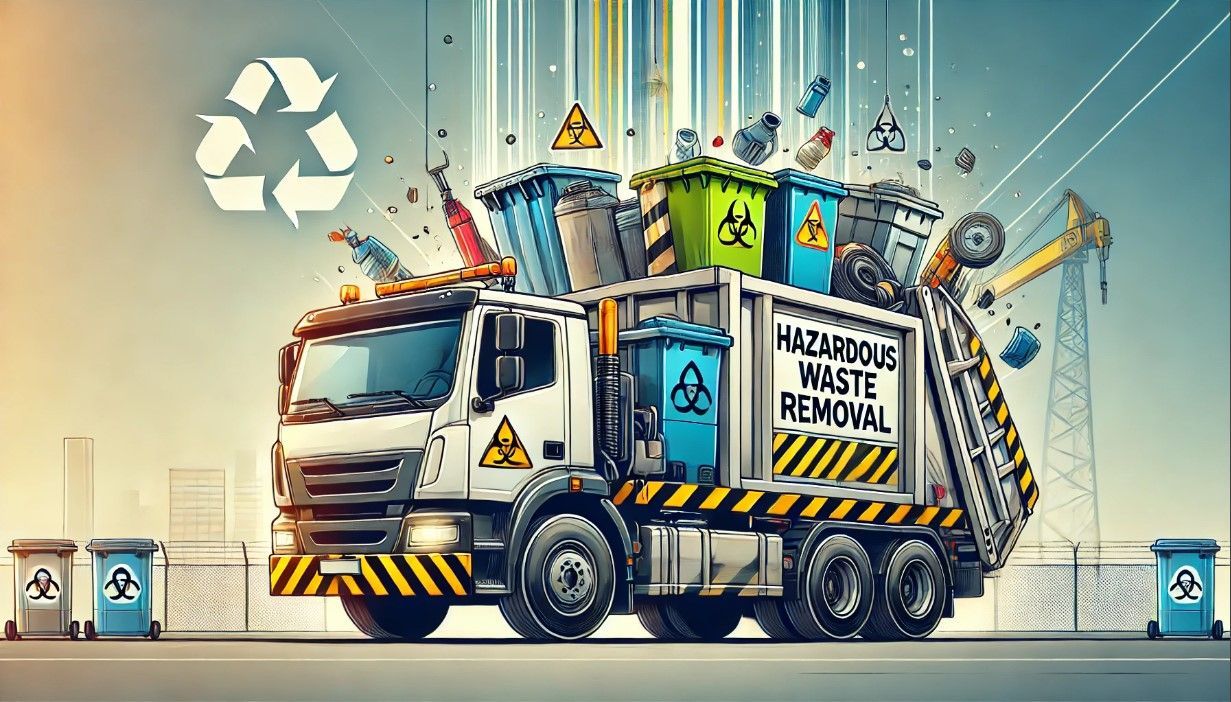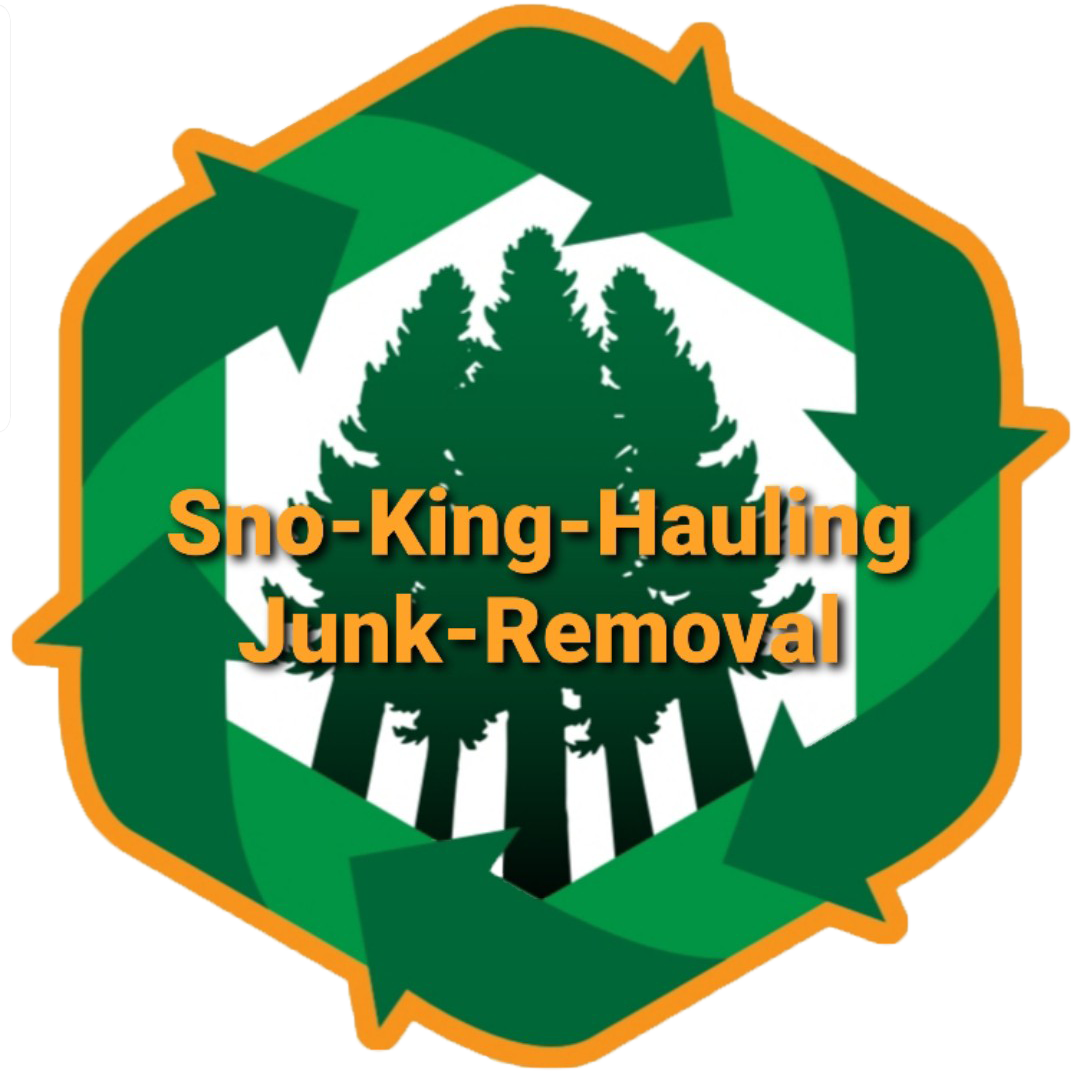
Comprehensive Guide to Hazardous Waste Removal
Hazardous waste removal is a critical aspect of maintaining a safe and healthy environment. Improper handling and disposal of hazardous waste can lead to serious environmental and health consequences, including contamination and legal penalties. In this guide, we'll explore what hazardous waste is, the importance of
proper disposal, and how businesses and individuals can manage hazardous waste safely and effectively.
What is Hazardous Waste?
Hazardous waste refers to any material that is dangerous or potentially harmful to human health or the environment. This waste can come in various forms—liquid, solid, gas, or sludge—and includes materials such as chemicals, solvents, pesticides, and electronic waste.
Types of Hazardous Waste:
- Chemical Waste: Often generated by industrial processes, laboratories, and manufacturing, this includes acids, bases, solvents, and heavy metals.
- Biological Waste: This type includes medical waste from hospitals and clinics, such as used needles, syringes, and contaminated gloves.
- Radiological Waste: Waste that contains radioactive materials. It's often produced by medical treatments, nuclear power plants, and certain research facilities.
- Electronic Waste (E-waste): Discarded electronic devices and components like computers, batteries, and televisions, which may contain hazardous materials like lead, mercury, and cadmium.
Why Proper Hazardous Waste Removal Matters
The removal and proper disposal of hazardous waste are crucial for several reasons:
- Environmental Protection: Improper disposal can lead to soil, water, and air pollution, affecting wildlife and ecosystems.
- Human Health: Exposure to hazardous waste can cause serious health issues, including respiratory problems, skin irritations, and even cancer.
- Legal Compliance: Failing to comply with hazardous waste regulations can result in hefty fines and legal action. Regulatory bodies like the Environmental Protection Agency (EPA) in the U.S. enforce strict guidelines for hazardous waste management.
Best Practices for Hazardous Waste Removal
Removing hazardous waste involves more than just throwing it away. It requires a systematic approach to ensure safety and compliance.
- Identify Hazardous Waste: The first step is to correctly identify hazardous waste. Use safety data sheets (SDS) and consult with experts if necessary to determine whether a waste is hazardous.
- Segregate Waste: Different types of hazardous waste should not be mixed. For example, chemical waste should be stored separately from biological waste to prevent dangerous reactions.
- Use Proper Storage Containers: Hazardous waste should be stored in approved containers that are compatible with the waste material. These containers should be labeled correctly to prevent accidents.
- Follow Disposal Regulations: Each type of hazardous waste has specific disposal requirements. For instance, electronic waste often needs to be taken to specialized recycling centers, while biological waste may require incineration.
- Train Employees: Proper training is crucial for anyone handling hazardous waste. Employees should know how to use personal protective equipment (PPE), handle spills, and understand the disposal procedures.
- Maintain Accurate Records: Keeping detailed records of hazardous waste, including its type, quantity, and disposal method, is essential for regulatory compliance and audit purposes.
Common Mistakes in Hazardous Waste Disposal
Despite best efforts, mistakes in hazardous waste management can occur. Here are some common errors and how to avoid them:
- Mixing Incompatible Wastes: Always store different types of hazardous waste separately to avoid dangerous chemical reactions.
- Improper Labeling: Mislabeling containers can lead to improper handling and potential exposure. Make sure all labels are clear and up to date.
- Ignoring Local Regulations: Hazardous waste disposal regulations can vary by state or country. Always check local laws to ensure compliance.
- Failure to Update Training: Regulations and best practices change. Regularly update training programs to ensure employees are aware of the latest standards.
FAQs About Hazardous Waste Removal
1. What are the penalties for improper hazardous waste disposal?
Penalties can vary widely depending on the severity of the violation and local regulations. They can range from fines to criminal charges in severe cases.
2. How can I find a certified hazardous waste removal company?
You can search online for certified companies or check with local environmental agencies for recommendations.
3. What should I do in case of a hazardous waste spill?
Immediately evacuate the area and contact emergency services if necessary. Follow your organization’s spill response plan and use appropriate PPE to clean up the spill safely.
4. Is electronic waste considered hazardous?
Yes, many electronic devices contain hazardous materials like lead and mercury, making them hazardous waste when discarded.
Types of Hazardous Waste and Their Disposal Methods
| Type of Hazardous Waste | Examples | Disposal Method |
|---|---|---|
| Chemical Waste | Acids, solvents, heavy metals | Special chemical disposal facilities |
| Biological Waste | Used needles, contaminated gloves | Incineration or autoclaving |
| Radiological Waste | Medical radioactive waste | Secured storage or specialized disposal |
| Electronic Waste | Old computers, batteries | Recycling centers or specialized facilities |
Encouraging Reader Interaction
What types of hazardous waste do you commonly encounter in your business or household? Share your experiences in the comments below! Don’t forget to share this article if you found it helpful. Let's keep our environment safe together!
Proper hazardous waste removal is essential for protecting our environment, health, and compliance with legal standards. By understanding the different types of hazardous waste and adhering to best practices, businesses and individuals can manage these materials safely and responsibly. Stay informed, stay safe, and contribute to a cleaner planet.
Furniture Removal
- Couch Removal
- Furniture Removal
- Mattress Removal
- Bed Removal
- Futon Removal
- Box Spring Removal
- Couch Removal
- Sofa Removal
- Love Seat Removal
- Sectional Removal
- Table Removal
- Chair Removal
- Office Furniture Removal
- Bulk Item Pickup
Appliance Removal
- Refrigerator Removal
- Appliance Removal
- Stove Removal
- Range Removal
- Microwave Removal
- Oven Removal
- Freezer Removal
- Dishwasher Removal
- Washer Removal
- Dryer Removal
Other Services
- Hot tub Junk Removal
- Dumpster Rentals
- Shed Junk Removal
- Hoarder house Cleanouts
- House Junk Removal
- Construction Waste Removal
- Garage Cleanouts
- Foreclosure Clear outs
- Eviction Clean outs
- Apartment Cleanouts
- Property Clean outs
- Estate Clean outs
- Hoarding Clean outs
- Yard Waste Removal
- Storage Unit Cleanouts
- Warehouse Cleanouts
- Commercial Junk Removal
OUR SERVICES AND AREAS
- Everett, WA
- Seattle, WA
- Marysville, WA
- Snohomish, WA
- Arlington, WA
- Mukilteo, WA
- Monroe, WA
- Granite Falls, WA
- Bothell, WA
- Whidbey Island, WA
- Stanwood, WA
- Edmonds, WA
Contact us
If you have any questions or need any assistance after business hours, please get in touch.
Phone
BUSINESS HOURS
- Monday
- -
- Tuesday
- -
- Wednesday
- -
- Thursday
- -
- Friday
- -
- Saturday
- -
- Sunday
- Closed
All Rights Reserved | Sno King Junk Removal
